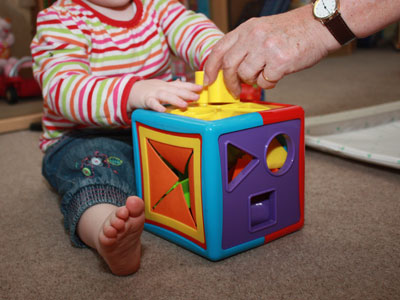
A combination of funding pressures and rising demand is forcing child protection teams to operate as an ‘emergency service’ with thresholds for intervention set at a much higher level than social workers want, a leading children’s charity has warned.
The 2014 edition of the NSPCC’s annual ‘how safe are our children’ report found that child protection services are “buckling under the pressure” after analysing data on 20 indicators of child safety. The NSPCC found that almost every indicator of demand – including the number of looked-after children – had increased over the past seven years but public spending had returned to 2006/07 levels.
Child protection is becoming more tightly “rationed” despite high demand for interventions, the NSPCC said. The charity pointed to data showing that more than half of local authorities in England and Wales had started to accept fewer referrals into children’s social care over the last three years. Early intervention services, such as children’s centres, are also being cut back as local authorities struggle to make year-on-year savings, the charity warned.
Peter Wanless, chief executive of the NSPCC, said the pressures on social services meant large numbers of children are being left without statutory support. He stressed that other agencies that came into contact with children had a key role to play in child protection.
“Acting alone, children’s social services struggle to be more than an emergency service, getting involved when pain and suffering for children is already entrenched or risk is very high,” he said.
“Social workers do an amazing and often thankless job under an intense spotlight but most are worked to exhaustion. We must stop seeing child protection as just the responsibility of children’s social workers and realise that the real child protection system includes our whole public service infrastructure. It’s teachers, nursery workers, police officers, doctors, nurses and all professionals who come into contact with children.”
Responding to the NSPCC’s findings, the Department for Education said it was improving child protection services and said the “vast majority” of councils had protected frontline children’s social care budgets.
In November, a Community Care survey of over 600 social workers revealed widespread concerns among frontline practitioners that rising child protection thresholds were leaving children in danger. At the time, the Department for Education said our survey presented a “picture which is simply not true”.
Sue Kent, professional officer at the British Association of Social Workers, said: “Social work is about working with people to find solutions to their problems and it is this kind of preventative and therapeutic approach that prevents families reaching crisis point.
“We need to think hard about a return to community based social work that supports parents where necessary and uses available resources to prevent crisis, not be forced to intervene once a child’s situation has escalated to a point of no return.”
A Department for Education spokesperson said: “The vast majority of councils have protected frontline children social care budgets. According to an independent Audit Commission report, council spending on children’s social care on average increased by 1.2% in real terms since 2010-11.
“As this report shows, they are taking action to protect more children, and Ofsted inspections are checking that children are getting the right help at the right time. However, it is still up to councils to ensure that staffing and caseloads are at appropriate levels to manage risk to local children.


 Assistive technology and dementia: practice tips
Assistive technology and dementia: practice tips  A trauma-informed approach to social work: practice tips
A trauma-informed approach to social work: practice tips 




 Find out how to develop your emotional resilience with our free downloadable guide
Find out how to develop your emotional resilience with our free downloadable guide  Develop your social work career with Community Care’s Careers and Training Guide
Develop your social work career with Community Care’s Careers and Training Guide  ‘Dear Sajid Javid: please end the inappropriate detention of autistic people and those with learning disabilities’
‘Dear Sajid Javid: please end the inappropriate detention of autistic people and those with learning disabilities’ Ofsted calls for power to scrutinise children’s home groups
Ofsted calls for power to scrutinise children’s home groups Seven in eight commissioners paying below ‘minimum rate for home care’
Seven in eight commissioners paying below ‘minimum rate for home care’
 Facebook
Facebook X
X LinkedIn
LinkedIn Instagram
Instagram
Comments are closed.